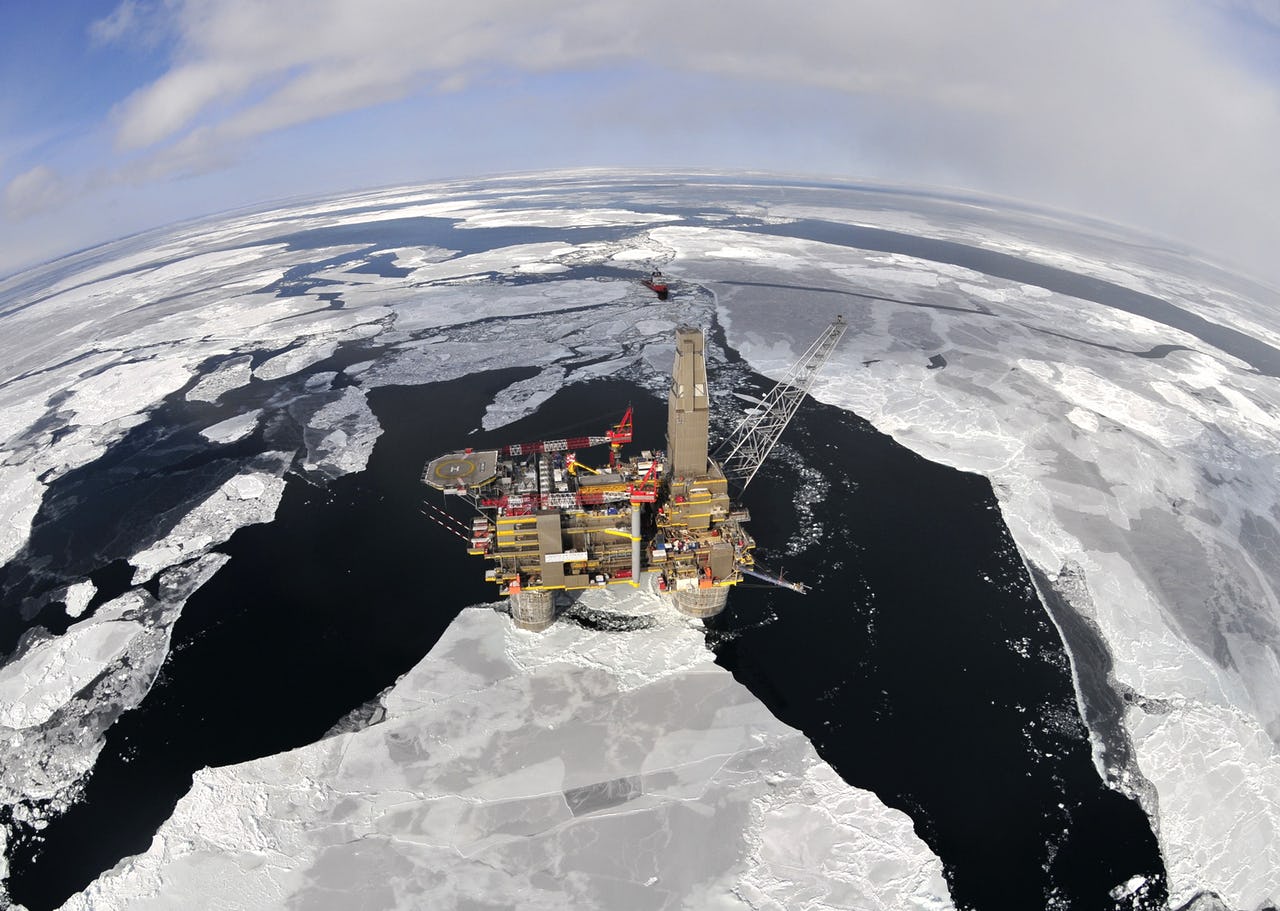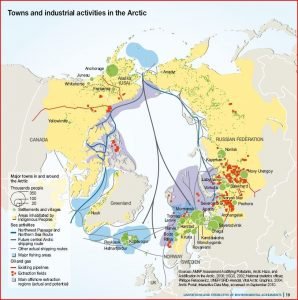It’s not just the Market – Drivers of Arctic Interest

Shell Oil and Gas Platform. Photo: Shell
The recent debate about a rush for the Arctic’s resources has primarily focused on the economic benefits, especially from hydrocarbon revenues in a situation of sufficiently high international commodity prices for oil and gas. The prospect of increasing energy demand in a world dependent on fossil fuels would spur hydrocarbon exploitation in the High North.
And indeed, the instable situation in the Maghreb countries and the debate surrounding nuclear energy after the Fukushima accident have already resulted in increasing oil and gas prices, which is a crucial factor for the exploration and development of Arctic oil and gas resources. Energy companies respond to high oil and gas prices with an increasing interest in developing new discoveries, and the higher the prices, the more companies are willing to invest in exploration and exploitation activities even in inhospitable and remote regions like the High North.
For example, Russian oil firms are responding to the recent oil price increase by massively increasing their oil exports. Deputy Energy Minister Sergei Kudryashov is quoted to have said that Russia had exported 3 million tons of oil products in the first four months of 2011; the same amount which has been exported in all of 2010. This has even led to a gasoline shortage in some parts of Russia where fuel prices are kept low by the government due to the upcoming parliamentary elections in December 2011.
Also Norway’s Statoil has benefitted from higher oil and gas prices. As a press release from the company reads, Statoil’s first quarter 2011 net operating income was NOK50.7 billion (approx. €6.4 billion), which amounts to a 28 percent increase compared to NOK39.6 billion in the first quarter 2010. This is mainly due to a 33 percent increase in average oil prices and 20% increase in average gas prices since 2010.
Finally, Russia’s Gazprom had a record profit in 2010 of nearly one trillion rubles (RUB981 billion, up 27 percent from 2009 levels) or approximately €24.2 billion thanks to high prices, a higher profit than ExxonMobil or Chevron. But also ExxonMobil’s and Chevron’s earnings rose substantially, up 57 percent from 2009 for ExxonMobil ending 2010 with $30.5 billion (approx. €20.4 billion), and up 81 percent for Chevron to $19 billion.
While oil and gas prices impact the development of Arctic resources, this is by far not the whole story of the political economy of Arctic resource development, as Oran Young and Gail Osherenko reminded us already in 1989; rather, “governments regularly experience powerful incentives to encourage or discourage Arctic development, incentives that are not based exclusively on world market prices”.1)
A vivid example is Greenland where the increase of revenues from the island’s resources provides the possibility of independence from Denmark. Additionally, general economic development and investments in new industries such as agriculture could reduce Greenland’s dependency on foreign imports. So although economic gains from Arctic resources play a huge role for Greenland, they are nevertheless a means to a higher end.
The Canadian government’s main drive to encourage Arctic development is often connected to the higher aim of securing Canadian sovereignty in the Arctic. In other words, Arctic exploration projects are encouraged in order to prove Canada’s effective occupancy of its vast Arctic territory.
For the US, Alaskan resource exploitation is often interpreted as a means to reduce the country’s dependency on foreign oil imports. In 2010, about 49 percent of the petroleum consumed was imported, showing a high dependence on foreign petroleum. President Obama is under increasing pressure to boost domestic oil production and in March 2011 he set a target of reducing foreign oil imports by a third by 2025.
Both the US and Canada have strong incentives to boost development in their Northern regions in order to improve the economic and social conditions in these often remote communities, for example through the creation of jobs and better education and social welfare systems, which in turn pay out again in form of increased tax revenue.

In short, many Northern development projects would not have been implemented on the basis of strict market signals without government support, for example in form of subsidies or tax breaks. A recent example is Russian plans for a comprehensive package of tax breaks and other benefits for companies operating on the Russian continental shelf in order to attract and facilitate investments in the Russian North.
Also broader interests exist that boost Arctic development, especially concerning the future energy mix. Arctic energy resources are expected to provide compensation for decreasing production of nuclear energy in some, especially European, countries in response to the Fukushima nuclear power plant disaster in Japan following a severe earthquake in March 2011. If a number of countries decide to reduce or even phase out their nuclear power programs, other energy resources like natural gas, also from the High North, could replace nuclear energy.
In conclusion, the drivers of Arctic development are manifold and while oil and gas prices surely have a strong role to play, other factors can also trigger Northern activities. It is in any case important to be aware of more country-specific interests and incentives in order to understand the dynamics of Arctic development.
References